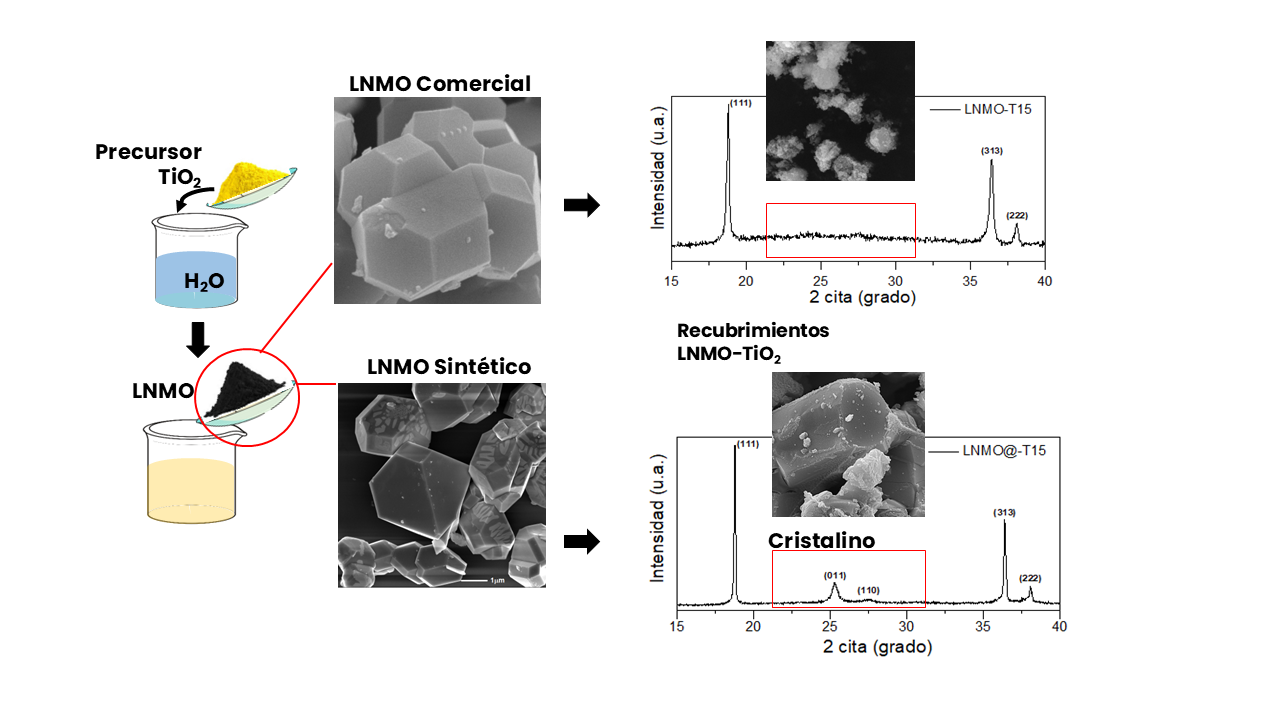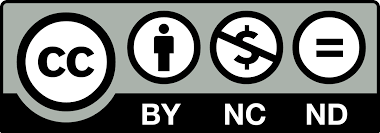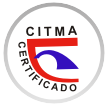PREPARACIÓN EN MEDIO ACUOSO DE RECUBRIMIENTOS AMORFOS DE TiO2 SOBRE PARTÍCULAS DE LNMO
Palabras clave:
recubrimiento superficial amorfo; LNMO; TiO2; baterías de ion litio.Resumen
Translator
El LiNi0.5Mn1.5O4 (LNMO) es un material prometedor para cátodos de alto voltaje en las baterías de ion litio, pero por reacciones con el electrolito, su capacidad se degrada. Esto puede evitarse con recubrimientos superficiales del material activo del cátodo. Se utiliza el método citrato en medio acuoso para recubrir el LiNi0.5Mn1.5O4 con TiO2 amorfo. Se obtuvieron tres recubrimientos, y se evaluó la composición, morfología, estabilidad térmica y conductividad electrónica. Se emplearon para la caracterización fluorescencia de rayos X, microscopía electrónica de barrido, difracción de rayos X, espectroscopía Raman y espectroscopía infrarroja con reflectancia total atenuada. La conductividad electrónica se midió por el método de Kelvin. Entre los recubrimientos preparados, se propone el LNMO-T3, pues la fase amorfa de TiO2 cubrió homogéneamente las partículas de LNMO con una morfología que se asemeja al recubrimiento físico de tipo núcleo-capa, con una mayor estabilidad térmica y una conductividad electrónica similar a la del material núcleo LNMO.
Citas
KUENZEL, M. et al. “Crystal engineering of
TMPOx-coated LiNi0. 5Mn1. 5O4 cathodes for highperformance lithium-ion batteries”. Materials Today.
, 39, 127-136.
https://doi.org/10.1016/j.mattod.2020.04.003
QURESHI, Z. A. et al. “Impact of coatings on the
electrochemical performance of LiNi0.5Mn1.5O4
cathode materials: A focused review”. Ceramics
International. 2022, 48(6), 7374-7392.
https://doi.org/10.1016/j.ceramint.2021.12.118
WU, P.; ZHANG, Y. “Enhanced Electrochemical
Performance of Zr4+ and Co3+ doped LiNi0.65Mn0.35O2
Cathode Material for Lithium Ion Batteries”. International Journal of Electrochemical Science.
, 17(6), 220646.
https://doi.org/10.20964/2022.06.48
CHEN, T. et al. “The CeF4-coated spinel LiNi0.5Mn1.5O4
with improved electrochemical performance for 5 V
lithium-ion batteries”. Journal of Materials Science:
Materials in Electronics. 2022, 33(15), 11712-11724.
https://doi.org/10.1007/s10854-022-08137-5
PILLAI, A. M. et al. “Surface engineering of
Li1.5Ni0.25Mn0.75O2.5 cathode material using TiO2
nanoparticles: An approach to improve
electrochemical performance and thermal stability”.
Journal of Alloys and Compounds. 2024 976, 173064.
https://doi.org/10.1016/j.jallcom.2023.173064
DAI, S. et al. “Enhanced high-rate cycling
performance of LiMn2O4 cathode materials by coating
nano-TiO2”. International Journal of Materials
Research. 2023, 114(1), 7-15.
https://doi.org/10.1515/ijmr-2022-0070
WAGEMAKER, M. et al. “Two phase morphology
limits lithium diffusion in TiO(2)(anatase): a (7)Li
MAS NMR study”. Journal of the American
Chemical Society. 2001, 123(46), 11454-11461.
https://doi.org/10.1021/ja0161148
MOITZHEIM, S.; DE GENDT, S.; VEREECKEN,
P. M. “Investigation of the Li-Ion Insertion
Mechanism for Amorphous and Anatase TiO2 ThinFilms”. Journal of The Electrochemical Society. 2019,
(2), A1. https://doi.org/10.1149/2.1091816jes
YILDIRIM, H.; GREELEY, J.;
SANKARANARAYANAN, S. K. “Effect of
concentration on the energetics and dynamics of Li
ion transport in anatase and amorphous TiO2”. The
Journal of Physical Chemistry C. 2011, 115(31),
-15673.
https://pubs.acs.org/doi/10.1021/jp202514j
HAO, X.; BARTLETT, B. M. “Improving the
Electrochemical Stability of the High-Voltage Li-Ion
Battery Cathode LiNi0.5Mn1.5O4 by Titanate-Based
Surface Modification”. Journal of The
Electrochemical Society . 2013, 160(5), A3162.
https://doi.org/10.1149/2.025305jes
SONG, Y. W. et al. “Surface Modification of
High Voltage Spinel LiNi0.5Mn1.5O4 Cathode Material
Manufactured via Co-precipitation”. Journal of The
Electrochemical Society . 2024, 171(5), 050558.
https://doi.org/10.1149/1945-7111/ad4e6f
FEINER, A. S.; MCEVOY, A. J.. “The Nernst
Equation”. Journal of Chemical Education. 1994,
(6), 493. https://doi.org/10.1021/ed071p493
DAKANALI, M. et al. “A New Dinuclear
Ti(IV)−Peroxo−Citrate Complex from Aqueous
Solutions. Synthetic, Structural, and Spectroscopic
Studies in Relevance to Aqueous
Titanium(IV)−Peroxo−Citrate Speciation”. Inorganic
Chemistry. 2003, 42(15), 4632-4639.
https://doi.org/10.1021/ic0343051
SAVINKINA, E. V. ET AL. “Introduction of
peroxo groups into titania: Preparation,
characterization and properties of the new peroxocontaining phase”. CrystEngComm. 2015, 17(37),
-7123. https://doi.org/10.1039/C5CE01090J
WANG, L. et al. “A comparative study of Fd-3m
and P4332 “LiNi0.5Mn1.5O4”. Solid State Ionics. 2011,
(1), 32-38.
https://doi.org/10.1016/j.ssi.2011.04.007
NAKAMOTO, K. Infrared and Raman Spectra of
Inorganic and Coordination Compounds, Part A:
Theory and Applications in Inorganic Chemistry. 6ta
Edición. New Jersey: Wiley, 2008. ISBN: 978-0-471-
-2
BICHARA, L. C. et al. “Vibrational Study and
Force Field of the Citric Acid Dimer Based on the
SQM Methodology”. Advances in Physical
Chemistry. 2011, 2011 347072.
https://doi.org/10.1155/2011/347072
WU, H.; CHAN, M.; CHAN, C. “FTIR
Characterization of Polymorphic Transformation of
Ammonium Nitrate”. Aerosol Science and
Technology. 2007, 41, 581-588.
https://doi.org/10.1080/02786820701272038
BANERJEE, S.; KUMAR, A.; DEVI, P.
“Preparation of nanoparticles of oxides by the citratenitrate process”. Journal of Thermal Analysis and
Calorimetry. 2011, 104, 859-867.
https://doi.org/10.1007/s10973-011-1525-6
ZHANG, B.; WANG, Z.; & GUO, H.. “Effect of
annealing treatment on electrochemical property of
LiNi0.5Mn1.5O4 spinel”. Transactions of Nonferrous
Metals Society of China. 2007, 17(2), 287-290.
https://doi.org/10.1016/S1003-6326(07)60086-7
ZHONG, Q. et al. “Synthesis and
Electrochemistry of LiNixMn2−xO4”. Journal of The
Electrochemical Society. 1997, 144(1), 205.
https://doi.org/10.1149/1.1837386
ADAMCZYK, A.; DŁUGOŃ, E. “The FTIR
studies of gels and thin films of Al2O3-TiO2 and
Al2O3-TiO2-SiO2 systems”. Spectrochimica Acta Part
A: Molecular and Biomolecular Spectroscopy. 2012,
, 11-17. https://doi.org/10.1016/j.saa.2011.12.018
OKUDUR, F. U. et al. “Ti surface doping of
LiNi0.5Mn1.5O4−δ positive electrodes for lithium ion
batteries”. RSC Advances. 2018, 8, 7287-7300.
https://doi.org/10.1039/C7RA12932G
BHATIA, A. et al. “Detailed redox mechanism
and self-discharge diagnostic of 4.9 V LiMn1.5Ni0.5O4
spinel cathode revealed by Raman spectroscopy”.
Journal of Materials Chemistry A. 2021, 9, (13496-
. https://doi.org/10.1039/D1TA00989C
HIROI, Z. “Inorganic structural chemistry of
titanium dioxide polymorphs”. Inorganic Chemistry.
, 61(22), 8393-8401.
https://pubs.acs.org/doi/10.1021/acs.inorgchem.2c009
CHEN, Z. et al. “Role of surface coating on
cathode materials for lithium-ion batteries”. Journal
of Materials Chemistry. 2010, 20(36), 7606-7612.
https://doi.org/10.1039/C0JM00154F
MUNIR, S. et al. “Effect of carrier concentration
on the optical band gap of TiO2 nanoparticles”.
Materials & Design. 2016, 92, 64-72.
https://doi.org/10.1016/j.matdes.2015.12.022
DENG, J. et al. “Improving the fast discharge
performance of high-voltage LiNi0.5Mn1.5O4 spinel by
Cu2+, Al3+, Ti4+ tri-doping”. Journal of Alloys and
Compounds. 2016, 677, 18-26.

Publicado
Cómo citar
Número
Sección
Licencia
Derechos de autor 2025 Ana Laura Díaz-Perera, Carlos Ricardo Milián-Pila, Manuel Ávila-Santos, Yodalgis Mosqueda-Laffita, Eduardo Lázaro Pérez-Cappe

Esta obra está bajo una licencia internacional Creative Commons Atribución-NoComercial-SinDerivadas 4.0.
Esta revista proporciona un acceso abierto inmediato a su contenido, basado en el principio de que ofrecer al público un acceso libre a las investigaciones ayuda a un mayor intercambio global de conocimiento. Cada autor es responsable del contenido de cada uno de sus artículos.






















